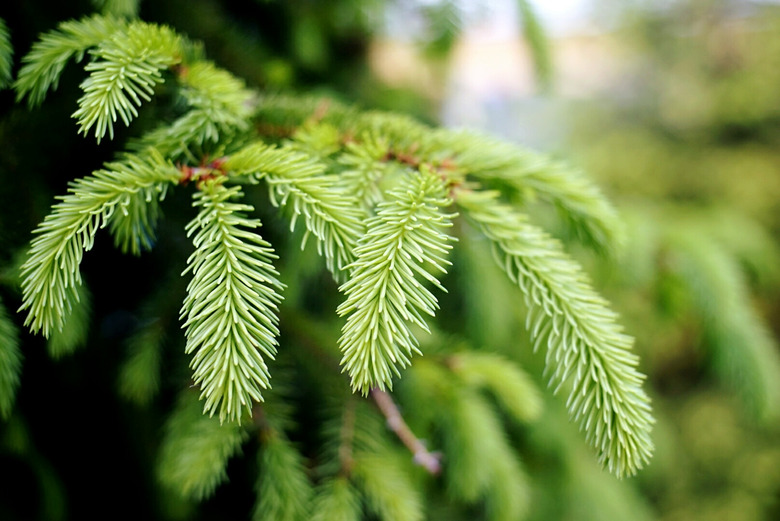What Are Spruce Trees Used For?
The spruce tree, classified in the Picea genus, is a classic evergreen conifer option for your landscape. Strong, straight trunks and tiers of dense branches make these trees a beautiful addition. But the wood from the trees also serves as an important raw material for building supplies and in the paper industry. The many uses of the spruce tree make it a versatile option.
Spruce Tree Wood
Spruce Tree Wood
Spruce wood offers an even texture that makes it appealing as a building material. It's also a lightweight wood, which makes it versatile for low-stress applications. Some varieties of spruce offer greater strength, making them useful for different building purposes. The Sitka spruce (Picea sitchensis, USDA zones 6-9) is a particularly sought-after species when it comes to lumber and paper production. Sitka wood tops the list of trees when it comes to strength-to-weight ratio, which makes it heavily used in the lumber industry. It's often used in furniture, trim, paneling and doors. It's also used to create paper pulp and musical instrument soundboards.
Landscaping Focal Point
Landscaping Focal Point
Because spruce trees are known for their straight trunks and horizontal branches, they make beautiful additions to the landscape. Many species are known for having an ideal shape. For example, the white spruce (Picea glauca, zones 3-6) tends to have a naturally beautiful shape. With so many varieties of spruce trees, you can find one that fits into your available space and gives the look you want. The Montgomery blue spruce (Picea pungens 'Montgomery,' zones 2-8) grows as a compact evergreen. The bird's nest spruce (Picea abies 'Nidiformis,' zones 3-6) is a dwarf version that works in planting bed borders.
You also have different choices when it comes to the color of the needles. Some spruce trees offer a rich green color. Others offer a greenish-gray color. Or, you can go with a bluish tone when you choose a Colorado blue spruce (Picea pungens, zones 3-7). Spruce trees aren't all just tall, green trees with needles. You can get lots of variety, whether you choose a single spruce as a focal point or add several spruce trees throughout your property.
Living Windbreaks
Living Windbreaks
Windbreaks can be a very important part of the landscape, especially in large, open, flat areas. Windbreaks don't just slow down the wind to make your property less breezy. They can also minimize erosion, cut down on your heating costs, prevent snow buildup and protect buildings, crops and livestock.
Evergreen trees make the best windbreaks since they keep their foliage year-round. Windbreaks typically have either two or three rows of trees. Using different species can help protect the windbreak if a disease or insect infestation hits by making sure at least some of the trees survive. Many spruce varieties, including the Norway, white and Colorado, offer a dense addition to the windbreak.
Christmas Trees
Christmas Trees
Spruce trees are among several types of evergreen trees that are popular as Christmas trees. Many tree farms grow spruce trees to sell around the holidays. Common varieties used for this purpose include the Colorado blue spruce, white spruce and Norway spruce (Picea abies, zones 3-8).
The Colorado blue spruce works well for this purpose because of its good needle retention, bluish-gray foliage and symmetrical shape. White spruce excels at needle retention compared to other spruce varieties. It also appeals as a Christmas tree because of an attractive natural shape and its short, stiff needles. Even though the Norway tree is a spruce with poor needle retention, it still works as a Christmas tree because of its good coloring. A freshly cut Norway spruce that's watered regularly holds onto its needles better.
Whatever your needs, you can get a lot of use out of spruce trees. Add them to your landscaping for beauty or functionality, use the wood for building projects and gather around a spruce tree during the holiday season.
References
- Arbor Day Foundation: Spruce
- Arbor Day Foundation: Norway Spruce: A Tree of Many Uses
- Better Homes & Gardens: Use Evergreens to Make an Impact
- University of Illinois Extension: Essential Elements for Windbreak Design
- National Christmas Tree Foundation: Tree Varieties
- Florida Lumber: Construction and Usage of Spruce Lumber
